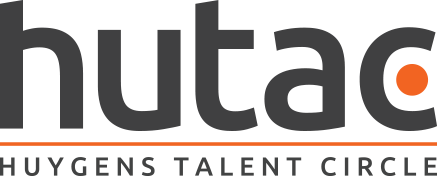The power of storytelling
We’ve recently invited Ryan Millar, writer, communications trainer and improviser/comedian, to hold a storytelling workshop for the HUTAC community. The event was truly inspiring, fun and interactive. Through a series of dynamic exercises we gained an insight into how powerful stories take shape, learnt how to train our brain to make connections between things that seem unrelated and how to tell stories in an appealing and engaging way so that we can sell our ideas to the world. Read on to gain some storytelling tips and tricks from Ryan.
Stories and connections
Stories are how we make sense of the world. And that’s why we create and tell stories: they link us to our audience, neurologically, physically and emotionally. They also draw our audience into what we’re saying. People don’t leave presentations thinking about slides of data, they leave thinking about the stories they heard.
It’s why documentary film-makers interview real people, it’s why researchers use case studies and it’s also why the best and most inspiring presentations and TED Talks all contain stories.
Because stories make people care and they have the power to make people change how they think and how they act.
No wonder we love stories so much! No wonder we’ve been telling stories since even before the dawn of human civilisation.
Entering the world of stories
Without going too far into the art and craft of storytelling we can start at a very elemental – even atomic – level of how stories work. Links.
Links are the key to stories, the building block. Without connections (literal, familial, thematic or otherwise) between characters, events, ideas, themes, to the audience etc, there is no story.
Fortunately for us, as story listeners and story creators, creating links is something we do naturally. However, it’s also something we can train ourselves to be better at. And as our ability to make connections improves, the likelihood of us presenting strings of disconnected data and facts decreases. Because we’ll see patterns, create relationships and our work will evolve accordingly. Because we’re no longer presenting information; now we’re telling stories.
Connection training
Our brain makes connections, because that’s what it’s designed to do: make sense of disparate stimuli. It’s also through this process that narratives are made. When we miss the bus in the morning, then spill coffee on our shirt when we get to work, then find out an important meeting we’d been preparing for got cancelled, we think we’re “having a bad morning”. But those incidents are, in reality, not actually connected. It’s our brain making the connections between them and, in the process, constructing the narrative.
Exercise
Bridging. In this exercise we get into groups of three, and have two people create unrelated phrases, and the third person “bridges” them (ie. they find a way to connect them). For example: Sentence one: “Mice love cheese” Sentence two: “The soldiers had been marching for days”. Now I’ll connect them: “The soldiers had been marching for days, and on empty stomachs, because at the last camp spot, the mice had gotten into the rations and eaten all the cheese.”
Simple is fine, complicated is also fine. There are of course many different ways to connect them. The trick is training your brain to make those connections faster and neater. And once those connections are in place, stories – the stories you want to tell – will appear.
Ryan Millar is Writer/Editor/Communications Specialist at Maxcap Creative Services. Check out his website.

